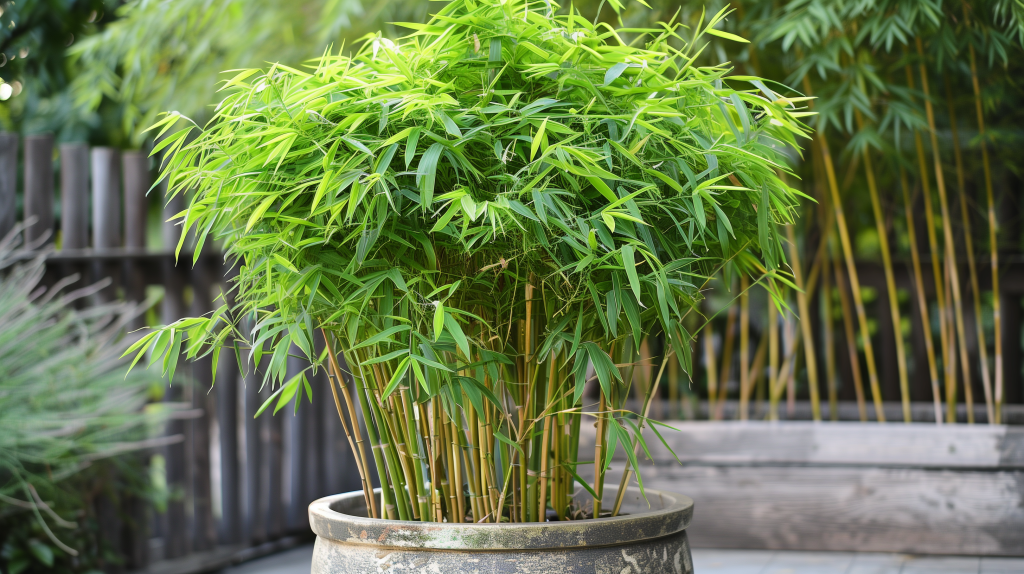Introduction to Phyllostachys Aurea: The Golden Bamboo

Introduction to Phyllostachys Aurea: The Golden Bamboo
Introduction
Phyllostachys aurea, commonly known as Golden Bamboo, is a highly sought-after plant for both residential gardens and commercial landscapes. Its unique aesthetic appeal and practical benefits make it a favourite among gardening enthusiasts and landscapers. In this comprehensive guide, we will delve into the fascinating world of Phyllostachys aurea, exploring its origins, characteristics, and the numerous advantages it brings to any green space.
Origin and Characteristics
Native Habitat and Geographical Distribution
Phyllostachys aurea is native to the southeastern regions of China and has since been widely cultivated across the globe. This resilient species has adapted to various climates, thriving in temperate zones and proving to be particularly hardy. Its ability to flourish in diverse environments has contributed significantly to its popularity and widespread use.
Key Physical Features
One of the most striking features of Phyllostachys aurea is its golden stems. These vibrant culms can grow up to 6 metres in height, creating a spectacular visual display that stands out in any garden. The stems turn a rich golden colour as they mature, adding a touch of elegance and exotic charm to the landscape.
The lush foliage of Golden Bamboo is another notable characteristic. The leaves are long, slender, and deep green, providing a dense canopy that offers excellent shade and privacy. This dense growth pattern makes it an ideal choice for creating natural screens or hedges.
Phyllostachys aurea has a unique growth pattern. Unlike some bamboo species, it does not spread aggressively, making it easier to manage and control in a garden setting. This clumping growth habit ensures that the plant remains a manageable and attractive addition to any landscape.
Benefits of Golden Bamboo
Aesthetic Appeal
The aesthetic appeal of Phyllostachys aurea is undeniable. Its golden stems and lush green foliage create a striking contrast that enhances the visual appeal of any garden. Whether used as a focal point, a backdrop, or a screen, Golden Bamboo adds a touch of elegance and sophistication to the landscape.
Privacy and Screening
Golden Bamboo is an excellent choice for creating privacy screens. Its dense foliage forms a natural barrier that can shield your garden from prying eyes and reduce noise pollution. This makes it an ideal plant for urban gardens or properties that require an element of seclusion.
Environmental Benefits
Phyllostachys aurea offers several environmental benefits. As a fast-growing plant, it plays a crucial role in carbon sequestration, helping to reduce the carbon footprint. Additionally, it provides a habitat for various wildlife species, promoting biodiversity in the garden.
Erosion Control
The robust root system of Golden Bamboo makes it an effective solution for erosion control. Its roots help stabilize the soil, preventing erosion on slopes and embankments. This makes it a valuable addition to gardens located on hilly or uneven terrain.
Low Maintenance
One of the significant advantages of Phyllostachys aurea is its low maintenance requirements. Once established, it requires minimal care, making it suitable for both novice and experienced gardeners. Regular pruning and occasional watering are typically sufficient to keep this bamboo thriving.
Versatility
Golden Bamboo is highly versatile and can be used in various garden designs. Whether you are looking to create a tropical oasis, a Japanese-inspired garden, or a modern landscape, Phyllostachys aurea can seamlessly fit into any theme. Its adaptability makes it a popular choice for garden designers and landscapers.
Economic Benefits
From an economic standpoint, Golden Bamboo is a valuable plant. Its rapid growth rate means it can be harvested more frequently than many other plants, providing a sustainable source of bamboo for various uses. It is often used in the production of furniture, flooring, and decorative items, contributing to the local economy and promoting sustainable practices.
Planting and Care
Site Selection
Choosing the right location for planting Phyllostachys aurea is crucial. It prefers well-drained soil and a site that receives ample sunlight. However, it can also tolerate partial shade, making it a flexible option for different garden conditions.
Soil Preparation
Preparing the soil before planting is essential for the healthy growth of Golden Bamboo. Enrich the soil with organic matter to improve its fertility and drainage. This will provide the plant with the necessary nutrients to establish itself and thrive.
Planting Process
When planting Phyllostachys aurea, ensure that the hole is twice the size of the root ball. Place the plant in the hole and backfill with soil, ensuring that it is firmly in place. Water the plant thoroughly after planting to help it settle into its new environment.
Watering and Fertilizing
Regular watering is essential, especially during the initial establishment period. Once established, Golden Bamboo is relatively drought-tolerant but benefits from occasional deep watering during dry spells. Fertilizing with a balanced fertilizer in the growing season will promote vigorous growth and vibrant foliage.
Pruning and Maintenance
Pruning is an important aspect of maintaining the shape and health of Phyllostachys aurea. Regularly remove any dead or damaged stems to encourage new growth. Pruning can also help control the height and spread of the plant, ensuring it remains a manageable and attractive feature in the garden.
Conclusion
Phyllostachys aurea, or Golden Bamboo, is a remarkable plant that offers a myriad of benefits for any garden or landscape. Its striking appearance, low maintenance requirements, and environmental advantages make it a standout choice for gardeners and landscapers alike. By incorporating this versatile bamboo into your garden, you can enjoy enhanced privacy, aesthetic appeal, and ecological benefits for years to come.


